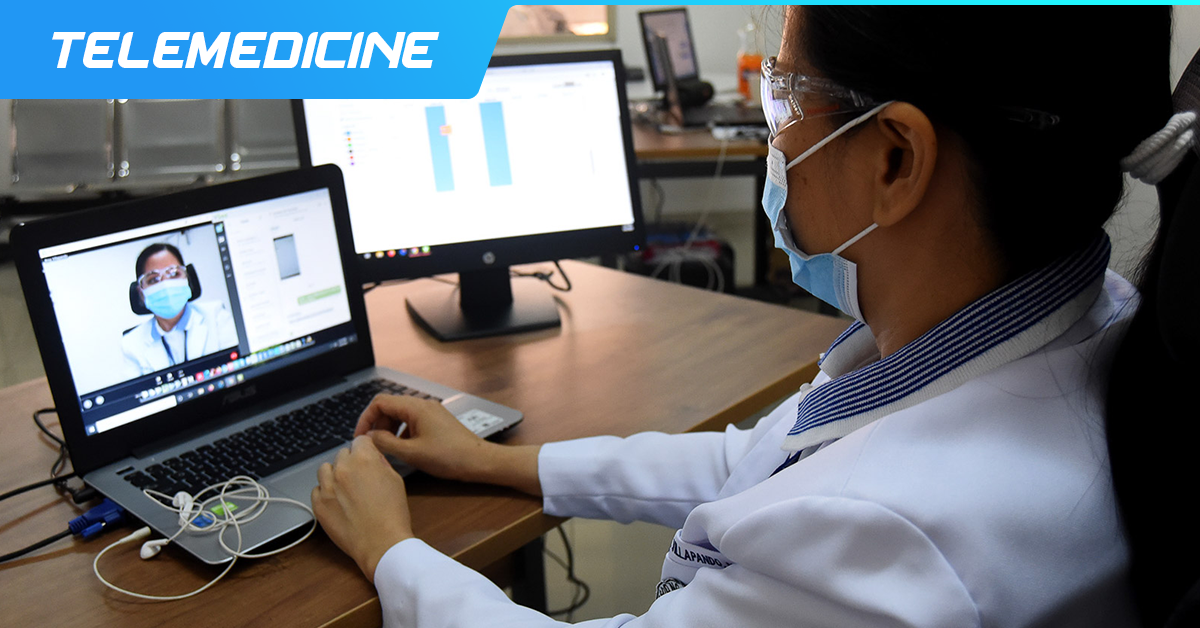April 30, 2021
by Luche Pilongo
In this world where technology is the main source of everything, it goes beyond the medical field. Within the early days, telemedicine was used generally to put through specialists working with a patient in one area to specialists somewhere else. This is one of the advantages to rural or difficult to reach populations where specialists are not promptly accessible. Throughout the following several decades, the equipment necessary to conduct remote visits remained costly and complex, so the approach was restricted while growing. The rise of the internet age brought with significant changes within the practice of telemedicine. The proliferation of smart gadgets, capable of high-quality video transmission, opened up the plausibility of conveying further healthcare to patients in their homes, work environments or helped living offices as an alternative to in-person visits for both primary and specialty care.
There is what we call telehealth and telemedicine, but what are their differences? The term telehealth incorporates a wide extend of innovations and services to supply patient care and improve the healthcare delivery system as an entirety. Telehealth is distinctive from telemedicine since it alludes to a broader scope of further healthcare services than telemedicine. Whereas telemedicine alludes particularly to farther clinical services, telehealth can allude to further non-clinical services, such as supplier training, administrative gatherings, and continuing medical education, in addition to clinical services. Concurring to the World Health Organization, telehealth incorporates, “Surveillance, health promotion, and public health functions.” On the other hand, Telemedicine involves the use of electronic communications and computer programs to supply clinical services to patients without an in-person visit. Telemedicine technology is regularly utilized for follow-up visits, management of chronic conditions, pharmaceutical management, specialist discussion, and a host of other clinical services that can be given remotely through secure video and sound connections.
Many people might be wondering if telemedicine is safe. When used under the right conditions and for suitable cases, telemedicine has been appeared to be as secure and compelling as in-person care. Of course, not every condition is conducive to treatment through video visits, so providers must utilize great judgment when leveraging this channel for healthcare conveyance.
There are a lot of benefits in telemedicine such as no transportation time or costs, no need to take time off of work, easy access to specialists because some patients who require the care of a specialist must drive long distances and invest a lot of time for each visit. Telemedicine makes it possible for patients and primary care doctor to use the skill of specialists who are not nearby. When it comes to serious health issues, people need to consult the most, excellent, not the closest. There is also a less chance of catching a modern ailment, less time within the waiting room, and also better health because patients are able to see their specialist as frequently as they wish to without the challenges of getting into the office. Specialists will be able to practice better management of the patient’s medication, lifestyle, and any chronic conditions they might have. Given this list, it is not shocking that individuals are looking out for healthcare providers that offer the comfort and cost adequacy of telehealth.
The majority of telemedicine services, most of which focus on diagnosis and clinical management, are routinely offered in industrialized regions including but not constrained to the United Kingdom of Great Britain and Northern Ireland, Scandinavia, North America, and Australia. In addition, biometric measuring gadgets such as equipment monitoring heart rate, blood pressure, and blood glucose levels are progressively utilized to remotely screen and manage patients with acute and chronic ailments.
In the Philippines, the DOH sees telemedicine as an enabler for health facility referral where patients no longer need to transfer from one health office to another due to the inaccessibility of specialists or services. Once a specialist sees the patient by means of telemedicine, the patient’s information is stored in an electronic medical record capable of transmitting the data to other facilities. The telemedicine project seeks to support the provision of primary care services to not only provide patients quicker and more efficient access to a medical meeting but also to permit secondary and tertiary health care providers to focus on more genuine cases that only they are competent of tending to. The Department of Health on April 6, 2021, launched its round-the-clock telemedicine hotline for Metro Manila residents on Tuesday. Those who need to consult with a doctor for COVID-19 medical advice and non-COVID-19 health-related concerns may call (02) 8424-1724 for free. The hotline number of Globe Telehealth, Inc (KonsultaMD) is (02) 7798-8000.
In Davao City, other institutions such as the Southern Philippines Medical Center (SPMC) Department of Dermatology had also opened its online consultation for skin-related concerns. Other local government units (LGUs) such as the province of Davao de Oro had also launched its online and text messaging platform, Call DdOc, for those seeking medical help amid COVID-pandemic. After Davao City launched its Telemedicine, the DOH also opened its Telemedicine hotline.

